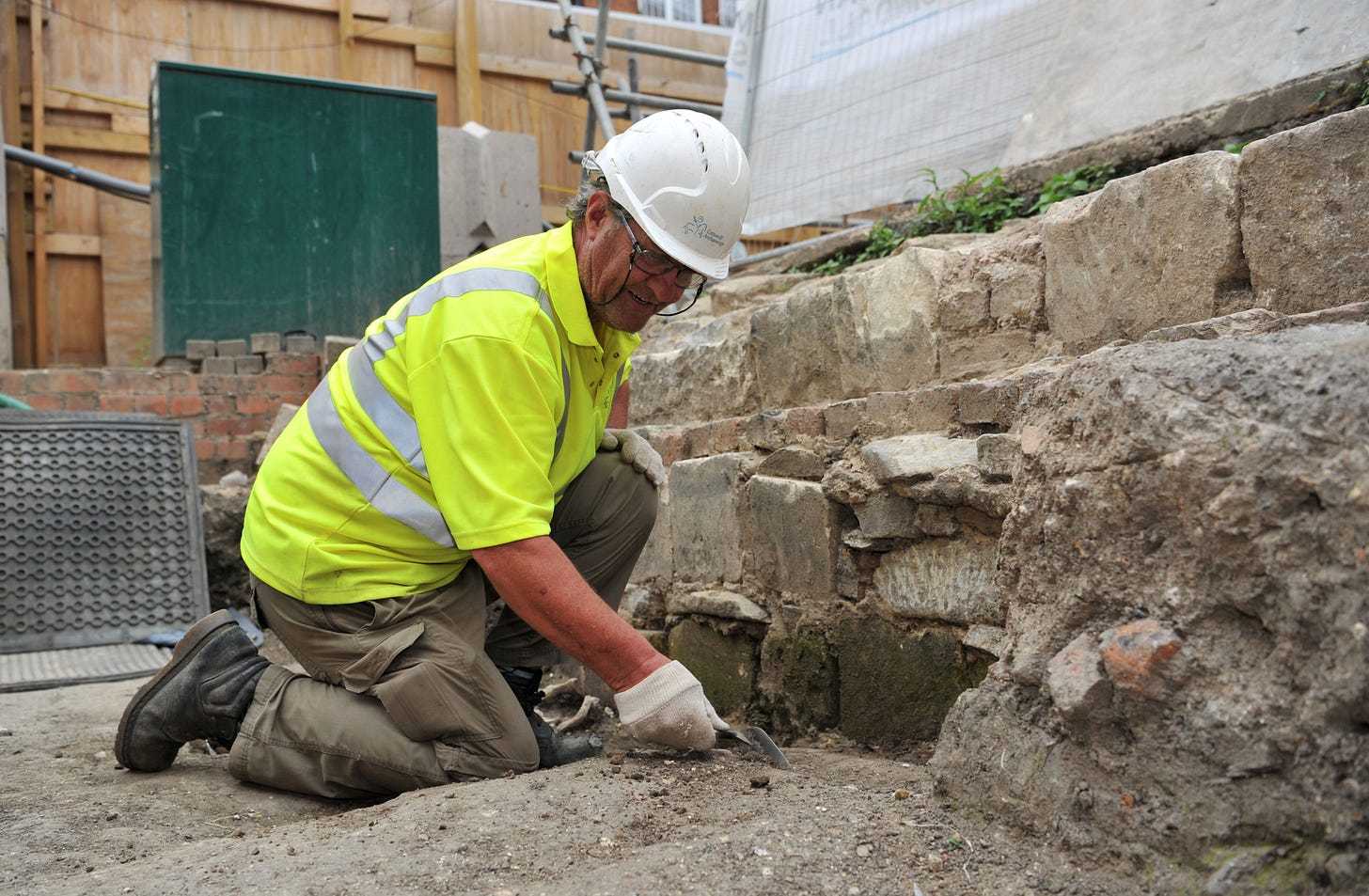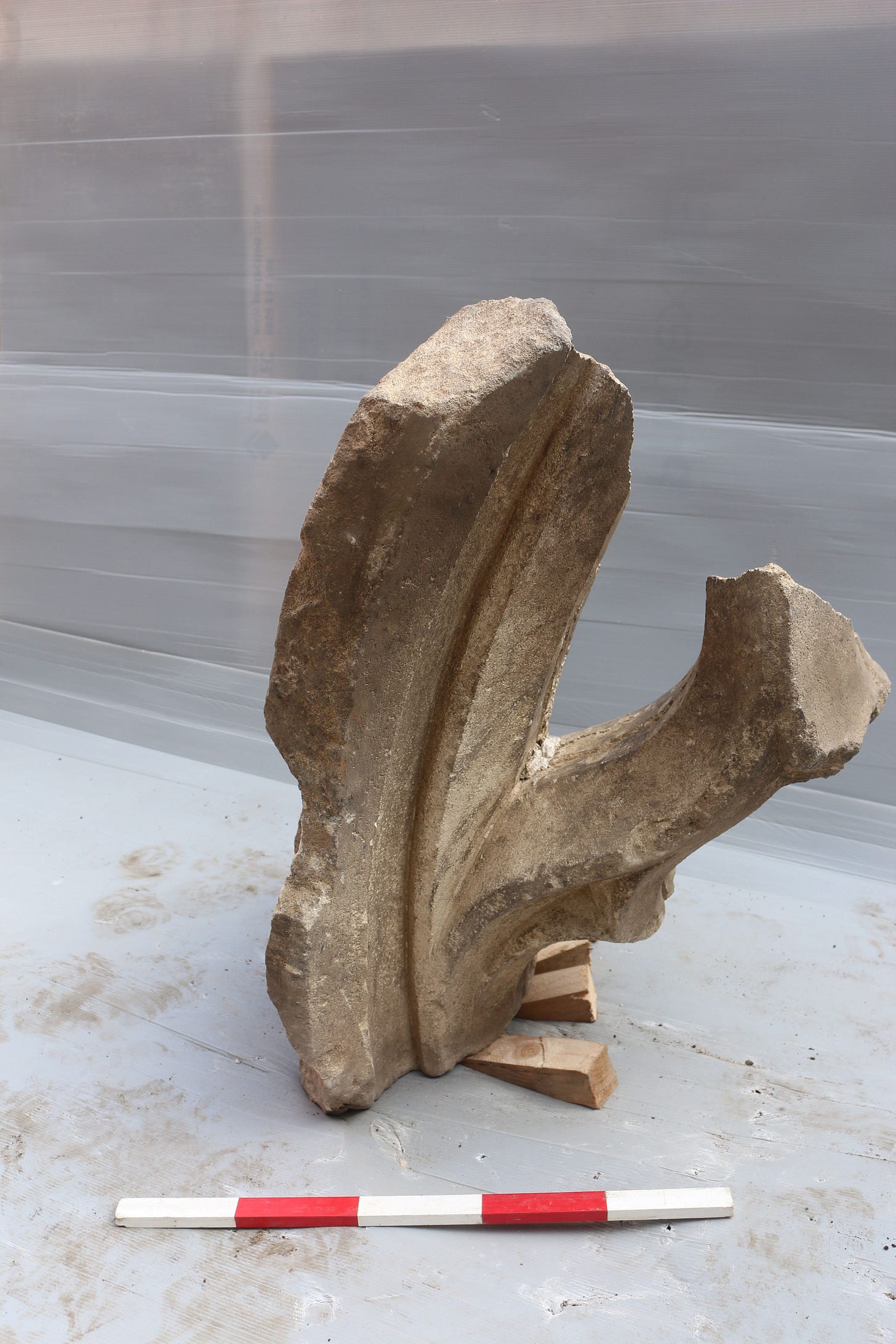Cotswold Archaeology reveals secrets of the past university's city campus
Cotswold Archaeology has revealed details about a medieval church in Gloucester after completing its archaeological excavation as part of University of Gloucestershire’s City Campus project.
* Welcome to our press release channel. Unlike other websites Raikes leads its editions only with orginal stories, properly researched, written and curated editorial content that help create a credible platform. But we see huge value the best press releases about Gloucestershire and post them right here in our PR Wire channel.
If you like what we are trying to do - orginal journalism about the county - and you haven’t already, please do think about becoming a subscriber to Raikes. You can sign up to receive your two extra editions a week and see past all our paywalls for just £2.30 a week - or £1.80 a week if two or more people sign up at once. Or go all in and become one of our Founding Partners or Founding Members!
Please do send us your press releases. Email andrew.merrell@raikesjournal.co.uk.
Cotswold Archaeology has announced previously unknown details about a medieval church in Gloucester after completing its programme of archaeological excavation as part of University of Gloucestershire’s City Campus project.
The University commissioned Cotswold Archaeology to carry out an extensive excavation at the location of the former Debenhams store, which is currently being transformed into a modern centre for teaching, learning and community partnerships, opening this year.
The existing City Campus courtyard, formerly a service/goods yard for the Bon Marche and later Debenhams department store, was previously occupied by St Aldate’s Church, which was originally founded in the medieval period.
The size and form of the medieval church, and its associated burial ground, were unknown prior to the works at City Campus as no previous archaeological investigations had been undertaken in this area of the site.
Steve Sheldon, Acting Principal Manager at Cotswold Archaeology, said: “The medieval church was demolished in the mid-1650s, with documentary sources indicating that much of its stonework was utilised to repair other parish churches in the town, such as those sustaining damage during the English Civil War.
“A new parish church, on or near the site of the medieval precursor, was constructed in the mid-18th century. The latter survived until the early 1960s when it was demolished to make way for the department store.”
Archaeological excavations undertaken within the existing courtyard fully revealed the footprint of the post-medieval church, represented by limestone and brick foundations, along with around 83 brick-lined burial vaults both within the church itself and in the associated burial ground.
These vaults had been cleared in the mid-1950s prior to construction of the goods service area for the former Bon Marche/Debenhams department store.
Approximately 150 post-medieval burials, not contained in burial vaults, were identified in the courtyard. Deeper excavations revealed approximately 170 earlier burials, the majority of which are provisionally thought to relate to the medieval church.
In total, 317 skeletons and 83 brick burial vaults were recorded. Where impacted by the current development, burials have been recorded and carefully excavated by the archaeological team under the terms of a burial licence issued by the Ministry of Justice and a Faculty granted by the Diocese of Gloucester.
Steve Sheldon said: “Although the footprint of the medieval church was not identified during the current archaeological works, the identification of a limestone wall with surviving lime plaster most probably represents part of the earlier church.
“If so, it is now evident that the floor plans of the two churches were not coincident, with the medieval church being constructed much further to the south, away from the St Aldate Street frontage.
“In addition to the limestone wall, a number of worked stone objects were recovered, including part of a mid-14th-century window arch with some internal tracery, associated with the medieval church.
“These objects have been retained on site, following archaeological recording, and will be displayed on site for students, staff and visitors to City Campus to appreciate once the site is fully operational.”
Archaeological works were undertaken within the basement (lower ground floor) of the existing property and during external works throughout the existing service courtyard, including work associated with connecting utilities to the site from St Aldate Street.
A series of sump pits excavated in the existing basement revealed evidence of Roman activity; including the remains of walls where the stones have been systematically removed, probably for use elsewhere; timber stakes and planking, a metaled courtyard surface and a small number of pits and ditches. Many of these features and deposits are comparable with those identified during archaeological works undertaken in the 1950s and early 1960s before the construction of the building.
Cliff Bateman, Senior Project Officer at Cotswold Archaeology said: “While our archaeological works are now complete on site, we will be undertaking scientific analysis of the finds and the human remains to learn more about the lives of those buried within the church yard.
“As this was an urban church, the story it will tell about the health of Gloucester’s population over a period of around 1,000 years will be most interesting. For example, on a very basic level, the impact of increased sugar in the diet during the 16th century was visibly clear in terms of dental health. The full results of these studies will be published in due course.”
The story above is a press release sent to Raikes on 11 April 2025.
* Everything you read on The Raikes Journal is made possible by our incredible Founding Partners: QuoLux, Willans LLP, Gloucestershire College, Merrell People and Randall & Payne, our sponsors Hartpury University and Hartpury College, our Founding Members and wonderful paying subscribers.
If you upgrade to paid, you’ll be part of this community interest company too. In an era when local journalism is all but gone, we are dedicated to delivering quality journalism for Gloucestershire, to championing the county, in particular its businesses, charities, education and training providers, to defending it, challenging those who need to be held to account and to helping create an even stronger community. If you upgrade to paid you will be able to see past the paywalls on our second and third email editions of the week, that lock all our archive after two weeks and lock our rolling Top 100 Businesses in Gloucestershire, the series that follows the financial fortunes of our biggest firms by turnover. You will be able to comment on our stories too. You’ll be helping make this CIC sustainable. Please do join us.
If you sign up now you can take advantage of our 30 per cent off offer - and become a member for a year for just £84, which works out at £7 a month or £1.62 a week!




